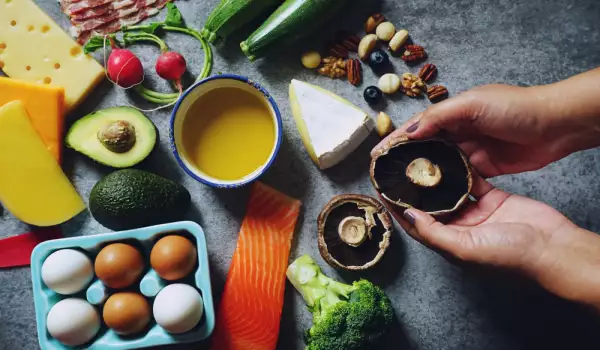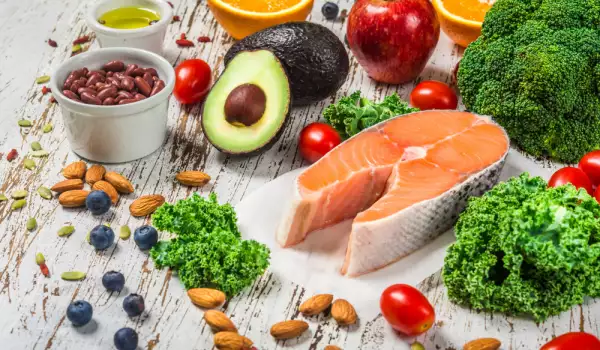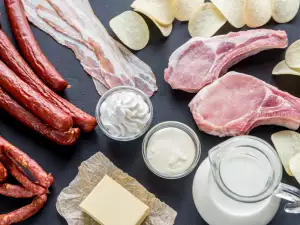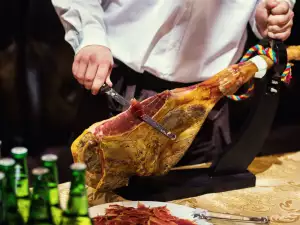For many people today, healthy eating is a philosophy, a way of thinking and living. The keto diet is increasingly present in conversations about healthy eating. This diet turns out to be the most discussed, because it is also the most tried and tested diet. Everyone in need relies on a keto diet not only to lose weight, but also to improve their health.
This way the regime of low-carbohydrate diet and high-fat proved to be a legendary diet. All this raises the curiosity of what exactly is a keto diet; what the benefits are but also the harms; how did this idea originate and for what purpose?
History of the ketogenic diet
The keto diet is a diet in which fats are used as a source of energy, as a result of which they are greatly increased in food at the expense of carbohydrates. The beginning of the idea was developed in the last century.
Exactly a century ago, in 1920, Dr. Wilder of an American clinic began developing a diet in an attempt to improve the condition of patients with type 1 diabetes - insulin-dependent, as well as children with epilepsy, which was difficult to control by medicine then. At the time, nutritional therapies were almost the only treatment because of the lack of effective drugs.

After about 30-70 years, the ketogenic diet has gradually lost people's interest due to the development of new drugs that can control diseases.
Now keto diets for epilepsy are gaining popularity again with children. In addition, the ketogenic diet has shown its potential in the treatment of other diseases of the nervous system, rare diseases of genetic origin and other difficult-to-control conditions. Last but not least is the desire to maintain a healthy weight and good appearance.
The essence of the ketogenic diet
The ketogenic diet is a type of diet in which fats are an energy source, so they are given priority in food. According to today's recommendations, in order to eat healthy, it is necessary to provide 45 to 60 percent of all calories from carbohydrates; 10-20 percent - from protein, and up to 30 percent - from fat.
If a person's recommended daily intake is about 2000 kilocalories, on a ketogenic diet, their food portions should include 165 grams of fat, 75 grams of protein and only 20 grams of carbohydrates per meal.
The biochemical foundations of the ketogenic diet are laid in the course of our evolutionary development as a species. The human body has adapted to use glucose as its main energy source. Most of our tissues can function using fatty acids, such as muscle tissue. However, others are dependent on glucose intake. This is especially true for the human brain and kidneys.
Carbohydrate starvation begins to break down muscle mass. However, it is not acceptable for the body to lose valuable muscle tissue. To store it, the body uses fat ketogenesis. This way, the need for energy is covered by ketothelium, called ketones, which result from the breakdown of adipose tissue.
Ketones are produced in the liver from fats and are used as fuel mainly by the brain. It consumes a lot of energy and cannot work directly with fat. They need to be converted because the brain needs either ketones or glucose.
Ketogenesis originated in episodic starvation during the nomadic period of human development. Even today, a healthy person often falls into ketosis spontaneously. Such cases occur with prolonged sleep without food; heavy training without the body being supported with food in advance; starvation in various religious rituals and others.
In the keto diet, ketosis occurs. The resulting ketones cross the blood and brain barriers and reach two important centers in the cerebral cortex. These are the centers of appetite and euphoria. Ketothelium is affected by two hormones - ghrelin and leptin. They regulate appetite and satiety. Ketones suppress the appetite, control hunger and reduce the desire to eat sweets. This leads to a reduction in energy intake, weight loss, but it does not affect muscle mass. The tasks set before the diet are performed without damage to important elements for the body.
The benefits of the keto diet

This diet is very effective for losing weight without damaging muscle tissue. At the same time, various diseases have a positive effect.
Obesity - weight loss is achieved without the risk of disease. It is varied and can be eaten without the constant worry of accumulating calories.
Heart problems - some risk factors for heart problems can be eliminated with this diet - high, cholesterol, high blood pressure, high blood sugar.
Cancer - the diet is used to reduce tumors for some cancers.
Epilepsy - a keto diet significantly reduces seizures in sick children.
Alzheimer's disease - the diet can relieve symptoms and slow the progression of the disease.
Acne - low insulin levels and reduced sugar intake improve the condition of the skin.
Harms and dangers of the keto diet
There are a number of side effects described due to the loss of carbohydrates. These are fatigue, muscle and joint pain, cramps, irritability and aggression, as well as apathy and depressive complaints.
There are also problems with the digestive tract, an increase in existing complaints in the kidneys, liver and bones, stunted growth in children and an increase in infectious diseases in them.
The keto diet is contraindicated for children and adolescents, pregnant and lactating women, people with eating disorders or those who are underweight, suffering from kidney, liver and endocrine diseases, as well as malignancies.
The recommendation is to consult a nutritionist before starting a ketogenic diet to reduce the risks of prolonged ketosis.
Prohibited foods in the keto diet
- Drinks with high sugar content - fruit juices, shakes, ice cream;
- Grainy foods and starch - pasta and grainy foods;
- All fruit;
- Legumes - beans, lentils, peas, chickpeas;
- All root vegetables - carrots, parsnips, potatoes;
- Low fat and dietary foods;
- Processed fats;
- Alcohol.
Allowed foods in the keto diet

- Meat - red meat, steaks, ham, sausage, bacon and chicken and turkey are good choices;
- Oily fish are recommended such as salmon, trout, tuna and mackerel;
- Eggs, butter and cream can also be included in the diet;
- All nuts and seeds are recommended - walnut, almond, pumpkin, flaxseed;
- Green leafy vegetables, tomatoes, onions and peppers can also diversify the menu;
- Avocado is a good choice because it gives almost everything the body needs;
- Spices and useful herbs are also allowed.
Types of keto diet
The standard ketogenic diet is the most popular. It is very low in carbohydrates, moderate in protein and high in fat. In percentage terms, this means 75 percent fat, 20 percent protein and 5 percent carbohydrates.
The cyclical keto diet includes low-carb diets, such as 5 ketogenic days and 2 days of high-carb foods.
The targeted keto diet allows you to consume carbohydrates to burn with exercise.
The high-protein keto diet is similar to the standard one, but with more protein. Its ratio is 60 percent fat, 35 percent protein and 5 percent carbohydrates.




















Comments